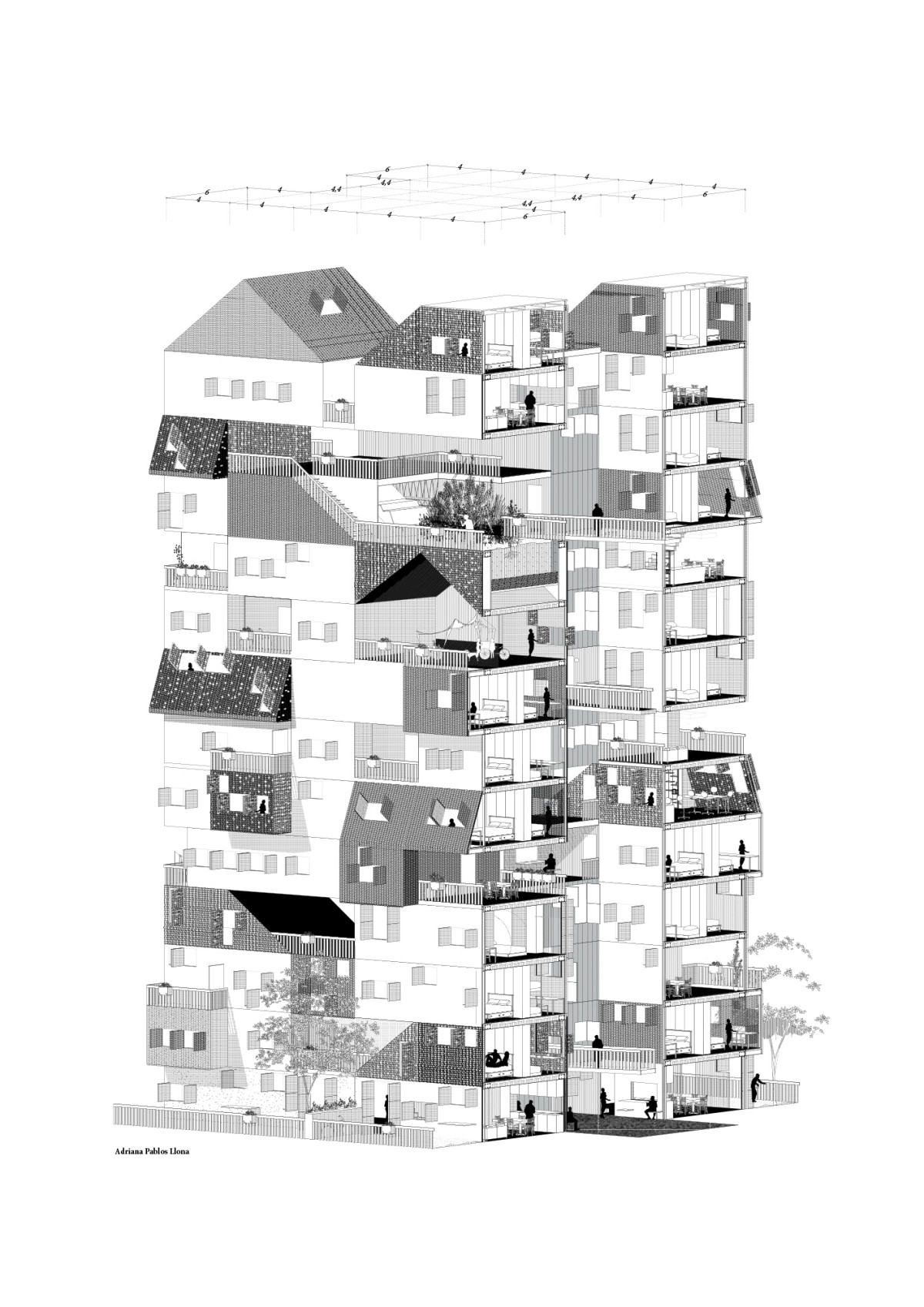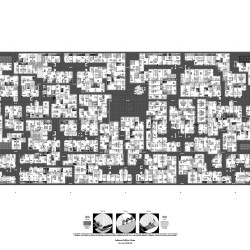Adriana Pablos Llona
The city is at crisis. The rehabilitation of large urban areas is a state of affairs. We are facing this challenge with outdated logics and urban tools.
_
_
ENGAGEMENT: THE CITY
Cities have grown unstoppably and will continue to. Time has turn the fabrics of previous and peripheral growths into privileged and consolidated urban tissues. They are now enjoying metropolitan centralities, large infrastructures, interconnections and networks. While little or no change has been introduced in the architecture, the built environment has survived many generations from that which designed it. As new generations bring always social reconfigurations. A fixed fabric is then condemned to the loss of appeal, therefore to degradation.
There are parts of our cities that are dying. We already tried to do better by creating new. This did not turn smart but easier. It is time to embrace the challenge of taking care of the older city.
HISTORICAL: THE EUROPEAN URBAN FABRICS
One of the most virulent periods in the growth of our cities were the developmentalism decades with the exodus from the countryside towards the cities in the seek of a better life. This fact made the metropolis to produce city within short times and little investments. The architectural spirit was the Modernism and its belief of the No-Place. Thus emerged hundreds of neighborhoods in Europe.
Housing is essential in urban tissues. They are cities’ intimate spaces , directly reflecting the evolution of society. Therefore, they are most sensitive to obsolescence. Traditionally, southern counties from Europe had their societies structured around strong families nucleus and so were their homes. In the last 50 years this housing structures have diversify greatly their composition. The traditional family has led to much more heterogeneous compositions such as coexistence households, single parenting, regrouped families or the soaring single person house.
HERE AND NOW: THE SPANISH DEVELOPMENTALISM NEIGHBORHOODS
From the amount of developmentalism neighborhoods with obsolescent housing stands out “El Barrio del Pilar” of Madrid, in Spain. Its 48 openblocks concentrating almost 13,000 people within the huge density of 348 inhabitants/ha. As most of its kind, it has and outdated dwelling composition (69 % of the houses are 2 bedrooms and 50 m2. and the remaining 31 % of 3 bedrooms in 60-70 m2.) As a result of this, today the neighborhood has an aging rate 14 times greater than the rest of the city and it is being abandoned (from 4.5 % to 6.3% of abandoned houses from 2001 to 2011 and increasing).
The neighborhood needs to be rehabilitated, regenerated and renewed, it needs and investment that will avoid its degradation and marginalization.
CONSTRAINTS: THE URBAN TOOLS
Until 3 years ago the urban planning tools in Spain were focused exclusively on the enlargement and creation of new city. The State Housing Plan of 2013 brings with it development policies (grants) and the L.R.R.U. (Urban Rehabilitation, Regeneration and Renewal Laws) clearly promoting at last the rehabilitation of urban areas through different mixed programs.
The complexity of rehabilitating consolidated urban fabric lies in the multiplicity of both public and private agents and owners, the land regime and the scale. In Spain the ground is under the L.P.H. (Horizontal Property Law) which implies two facts. First, any decision or change has to be approved by a bounteous majority of owners and secondly, owners are not required to remain in the property. This creates situations of indefinite tightness such as mortgages, rents, unresolved heritages or just different economics or personal situations making any reconfiguration hard to become true.
TACTICAL OPERATIONS: URBAN AND ARCHITECTURAL RESPONSES
The only possible way to take the initiative and avoid urban areas perish in degradation processes is to drop out the horizontal property, at least temporarily, and rehabilitate.
Successful rehabilitations in terms of living such as El barrio de La Mina in Barcelona, the Cascorro block in El Rastro de Madrid, the Special Plan of 12,000 houses in Alcorcón, Orcasitas (though in different timing and economic situation) or San Cristobal de los Angeles did it and concentrated the property through a public entity, thus being able to regenerate their respective tissues.
To rehabilitate El Barrio del Pilar in the current socio-economic context, a phased process is planned. Its purpose will be avoiding the displacement of population while introducing the land in the other regime of property possible: ordinary co-ownership. Therefore architectural interventions will be possible and will proceed to the needed regeneration.
The architectural strategy re-qualifies spaces. First, re-hierarchizing the ground public spaces (65 % of the ground plane is free surface). From there, as a first aid kit, architecture will arrange the topography finally removing staircases and providing accessibility to firemen, ambulances and moving trucks.
From there, this process of revitalization extends to the built, the blocks. In them, small scale operations will produce the improvement in the dwelling, its perfectibility and typological variety without giving a closed design but an adaptive system towards users and time.
The four operations are:
1) Replacement of a small percentage of beam fillings by inclined slabs. With them new paths, natural lighting specially needed at ground level houses and double heights will be introduced in the blocks.
2) Re-structuring of the envelopes making them efficient.
3) Expansion of the cantilevers
4) Re-qualification of the public common space that will no longer be limited to a core of communication.
Finally, it is by introducing an identity and adaptability in a fabric so common and impersonal heir to the Modern Movement that the survival of the collective will be ensured. Cities are crucial in our future.
It is believed that it is not about rehabilitating a building; it is understanding the social structures architecture creates and how this architecture must be convertible to stay healthy and appealing towards forthcoming generations.


















